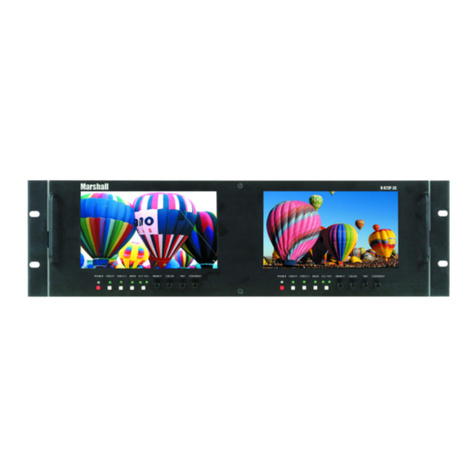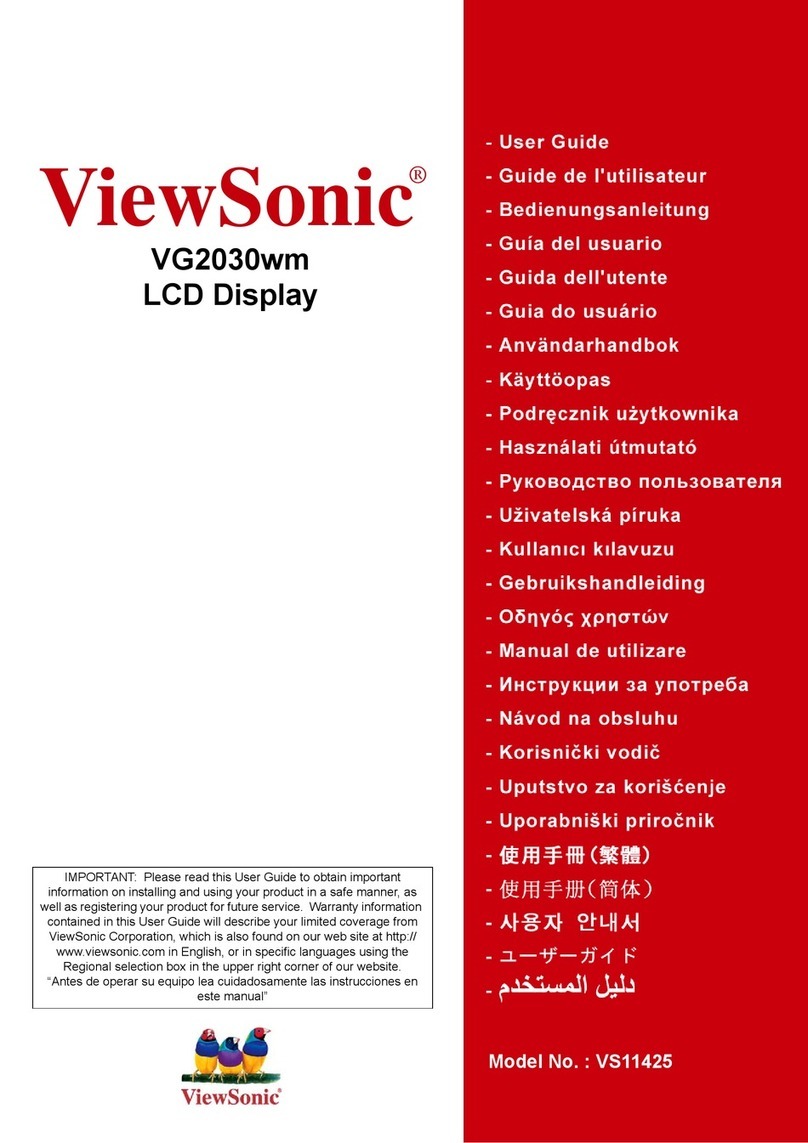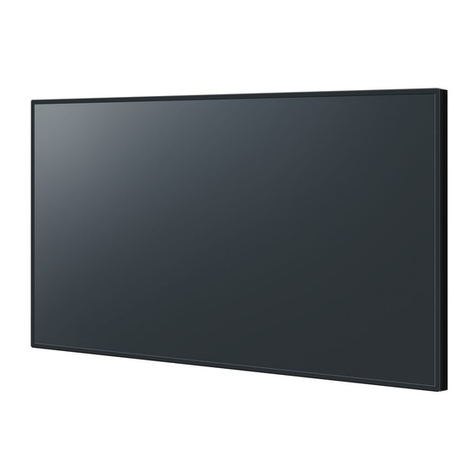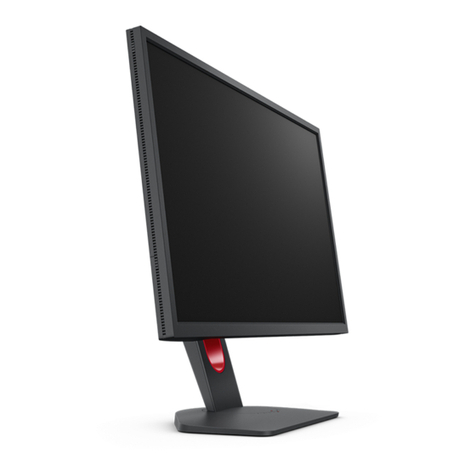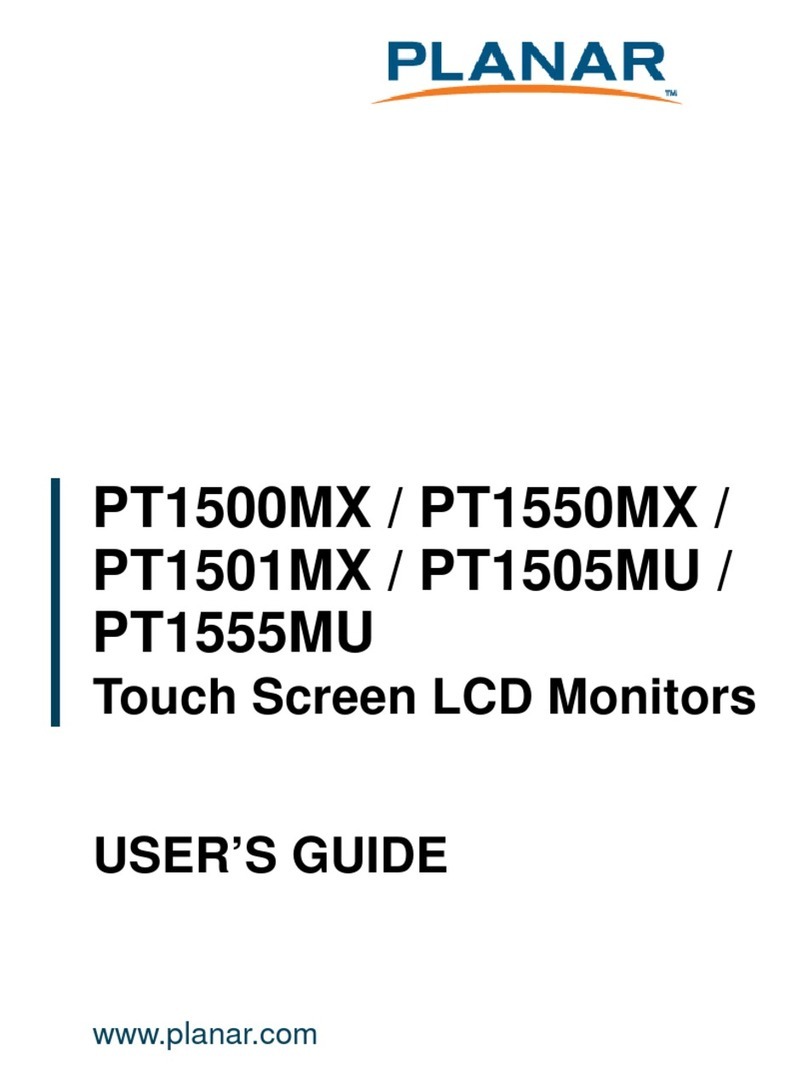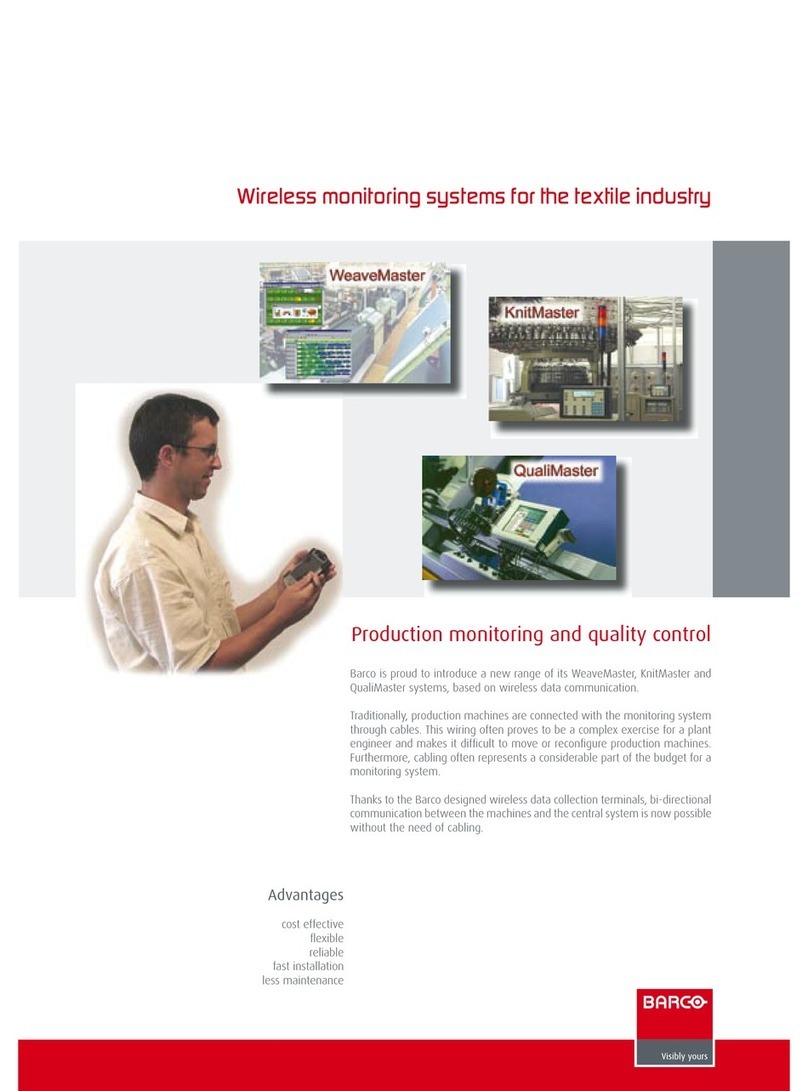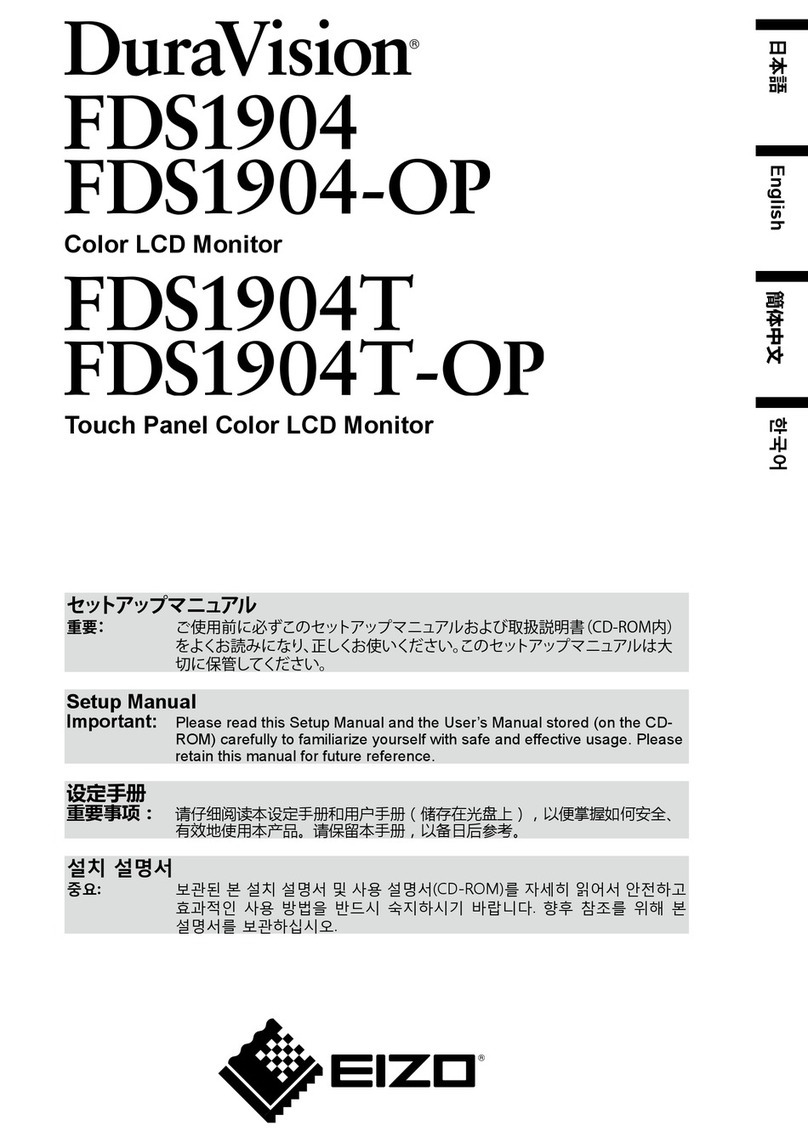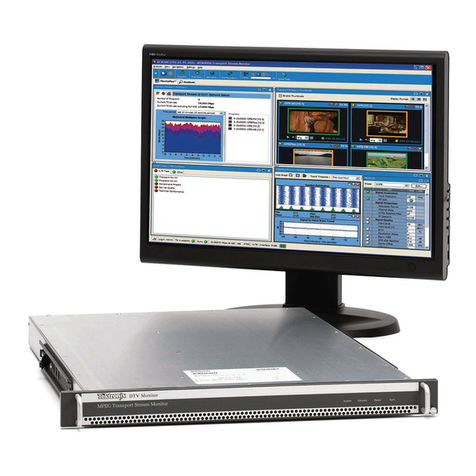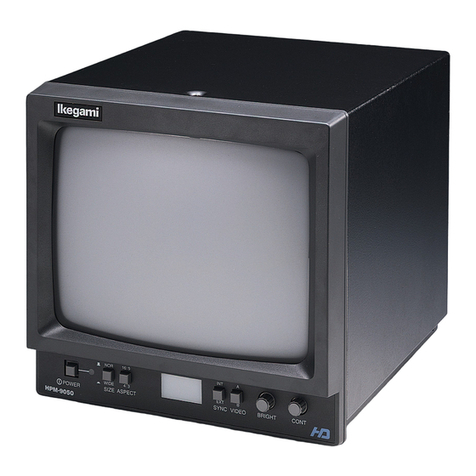Electronics International Inc MVP-50T User manual


Important Notice
***** MUST READ *****
Page 1 of 4
If you think it is not important to read this manual, you’re wrong! This manual
contains important operating information that may affect the safety of you, your
aircraft and passengers.
Read the Warranty / AgreementRead the Warranty / Agreement
Read the Warranty / AgreementRead the Warranty / Agreement
Read the Warranty / Agreement. There is information in the Warranty/Agreement that may alter your
decision to install this product. If you do not accept the terms of the Warranty / Agreement, doIf you do not accept the terms of the Warranty / Agreement, do
If you do not accept the terms of the Warranty / Agreement, doIf you do not accept the terms of the Warranty / Agreement, do
If you do not accept the terms of the Warranty / Agreement, do
not install this productnot install this product
not install this productnot install this product
not install this product. This product may be returned for a refund. Contact Electronics International
inc. for details.
If you do not agree to and acceptIf you do not agree to and accept
If you do not agree to and acceptIf you do not agree to and accept
If you do not agree to and accept ALLALL
ALLALL
ALL the terms of this warranty,the terms of this warranty,
the terms of this warranty,the terms of this warranty,
the terms of this warranty, DO NOT Install ThisDO NOT Install This
DO NOT Install ThisDO NOT Install This
DO NOT Install This
ProductProduct
ProductProduct
Product..
..
. You may return the product for a refund. Contact Electronics International Inc. for details.
By installing this product, the aircraft owner/pilot and installer agree to hold Electronics International Inc.
harmless and in no way responsible for monetary compensation, including punitive damages for any
incident, harm and/or damage associated with this product. If you do not agree to the above, DO NOTDO NOT
DO NOTDO NOT
DO NOT
INSTALL THIS PRODUCT.INSTALL THIS PRODUCT.
INSTALL THIS PRODUCT.INSTALL THIS PRODUCT.
INSTALL THIS PRODUCT. This product may be returned for a refund. Contact Electronics Interna-
tional inc. for details.
The pilot mustmust
mustmust
must understand the operation and limitations of this product before flying the aircraft. Do not
allow anyone to operate the aircraft that does not know how to properly interpret and operate this product.
Keep the Operating Manual in the aircraft at all times. If you do not thoroughly understand the operation
of this product, contact a knowledgeable flight instructor for training.
The ability for this product to respond to an engine or aircraft system anomaly is directly related to how
that anomaly affects the reading of the function(s) being monitored (i.e.: if an engine fire does not affect
the ITT or Oil Temp then the ITT and Oil Temp readings will not change).
This instrument only displays the parameters for the function(s) being monitored. The pilot is responsible
for interpreting the data and determining if an engine or aircraft system anomaly exists. When using this
instrument, the pilot’s diagnostic ability is limited to his/her interpretation of the displayed data and the
their observation skills. To improve these skills the pilot should seek training from a flight instructor.
If after reading this manual you do not have the knowledge to interpret the displayed data to operate the
aircraft safely or to detect engine and/or aircraft system problems, contact a knowledgeable instructor for
training prior to flying the aircraft with this instrument.
If you detect a problem using this instrument, it is your responsibility to take appropriate action to insure
the safety of the flight. Practice simulating problems to build your skills and to improve your understand
of the relationships between problems and their affects on the displayed data. To insure you are taking
appropriate action, contact a knowledgeable flight instructor for training. Inappropriate action can lead to
aircraft and/or engine damage, personal injury or death.

Important Notice
***** MUST READ *****
Page 2 of 4
This manual does not make any recommendations as to specific operating parameters or controlling
methods. Check the airframe and/or engine manufacturer’s recommendations to properly operate the
aircraft systems and engine. It is the pilot’s responsibility to operate the engine and aircraft safely.
It is possible for any instrument to fail thereby displaying inaccurate high, low or jumpy readings.
Therefore, you mustmust
mustmust
must be able to recognize an instrument failure and you mustmust
mustmust
must be proficient in operating
your aircraft safely in spite of an instrument failure. If you do not have this knowledge, contact the
FAA or a knowledgeable flight instructor for training prior to flying the aircraft with this instrument.
Electronics International Inc. is not liable or responsible for a pilot’s action or any situation that results
in personal injury, property damage, missed commitments, lack of use of an aircraft or any expenses
incurred due to: product failure, inaccuracy in displayed data or text files, display or display format
issues, software bugs or problems, upgrade or customization issues, misinterpretation of the display,
warning and/or limit settings, calibration problems, installation issues (leaks, mis-wiring, obstructions,
damage to aircraft or components, incorrect installation of any parts, wrong parts, parts that don’t fit,
etc.) or any other issues related to the installation or operation of this product. All of the above are
solely the pilot’s and/or installer’s responsibility. The pilot mustmust
mustmust
must understand the operation of this
product before flying the aircraft. The pilot will not allow anyone to operate the aircraft that does not
know the operation of this product. The pilot will keep the instrument Operating Instructions in the
aircraft at all times.
Set a unique password to protect all of the calibration and setup data in the MVP-50 (MVP). If setup or
calibration data is inadvertently or improperly changed, you could get inaccurate readings that may lead
to improper operation of the aircraft or engine. This could result in engine damage and/or an emer-
gency situation.
Before using the Weight and Balance screen check that the “Weight and Balance Setup” data in the
MVP System Configuration Menu is accurate. Always verify the MVP weight and balance data with
you aircraft’s POH.
Before flying the aircraft verify that the instrument markings displayed on the MVP are accurate with
your POH for every function displayed on the MVP.
Verify that the horsepower displayed on the MVP is accurate with your aircraft's POH and/or engine TC
data.
The MVP allows the pilot to enter checklists, flight plans and general information through the USB port.
This data must be verified for accuracy by the pilot prior to flight.
The MVP must be calibrated to the aircraft fuel system and the MVP's accuracy must be verified before
flying the aircraft.

Important Notice
***** MUST READ *****
Page 3 of 4
Fuel Level Accuracy Limitations:Fuel Level Accuracy Limitations:
Fuel Level Accuracy Limitations:Fuel Level Accuracy Limitations:
Fuel Level Accuracy Limitations:
The accuracy limitations of the MVP are listed below. It is the pilot/owner’s obligation to makeIt is the pilot/owner’s obligation to make
It is the pilot/owner’s obligation to makeIt is the pilot/owner’s obligation to make
It is the pilot/owner’s obligation to make
anyone flying the aircraft aware of these limitations.anyone flying the aircraft aware of these limitations.
anyone flying the aircraft aware of these limitations.anyone flying the aircraft aware of these limitations.
anyone flying the aircraft aware of these limitations.
1. Angle of Attack -1. Angle of Attack -
1. Angle of Attack -1. Angle of Attack -
1. Angle of Attack - The MVP must be calibrated with the aircraft in a cruise angle of attack. If
the aircraft is in an angle of attack other than cruise, the MVP may display inaccurate fuel levels
(depending on the mounting location and type of sensor used). If your aircraft does not sit at a cruise
angle of attack when on the ground, it may not display accurate fuel levels. Test your aircraft atTest your aircraft at
Test your aircraft atTest your aircraft at
Test your aircraft at
different angles of attack to determine how the MVP fuel level readings are affected.different angles of attack to determine how the MVP fuel level readings are affected.
different angles of attack to determine how the MVP fuel level readings are affected.different angles of attack to determine how the MVP fuel level readings are affected.
different angles of attack to determine how the MVP fuel level readings are affected.
2. Full Fuel Readings -Full Fuel Readings -
Full Fuel Readings -Full Fuel Readings -
Full Fuel Readings - As a tank is filled the fuel sensor may be unable to detect the fuel entering
the upper corners of the fuel tank. If this is the case with your sensor, the MVP may display fuel levels
lower than the actual fuel in the tanks when the tanks are full. When the fuel level drops to a point
where the fuel sensor starts to detect a change, the displayed fuel level should be accurate. Check theCheck the
Check theCheck the
Check the
accuracy of your system by comparing the displayed fuel levels on the MVP to the fuelaccuracy of your system by comparing the displayed fuel levels on the MVP to the fuel
accuracy of your system by comparing the displayed fuel levels on the MVP to the fuelaccuracy of your system by comparing the displayed fuel levels on the MVP to the fuel
accuracy of your system by comparing the displayed fuel levels on the MVP to the fuel
levels listed in the flight manual at each fill up.levels listed in the flight manual at each fill up.
levels listed in the flight manual at each fill up.levels listed in the flight manual at each fill up.
levels listed in the flight manual at each fill up.
3. Low Fuel Readings -3. Low Fuel Readings -
3. Low Fuel Readings -3. Low Fuel Readings -
3. Low Fuel Readings - Do not rely on the MVP to determine the fuel level in the tankDo not rely on the MVP to determine the fuel level in the tank
Do not rely on the MVP to determine the fuel level in the tankDo not rely on the MVP to determine the fuel level in the tank
Do not rely on the MVP to determine the fuel level in the tank
for an indicated tank level below 1/8for an indicated tank level below 1/8
for an indicated tank level below 1/8for an indicated tank level below 1/8
for an indicated tank level below 1/8. You should always fly the aircraft in such a manner as to
at least maintain the FAA minimum fuel requirements in the aircraft at all times. Depending on theDepending on the
Depending on theDepending on the
Depending on the
mounting location and type of fuel sensor used, the MVP may not be able to accuratelymounting location and type of fuel sensor used, the MVP may not be able to accurately
mounting location and type of fuel sensor used, the MVP may not be able to accuratelymounting location and type of fuel sensor used, the MVP may not be able to accurately
mounting location and type of fuel sensor used, the MVP may not be able to accurately
measure the last few gallons of fuel in the tanks.measure the last few gallons of fuel in the tanks.
measure the last few gallons of fuel in the tanks.measure the last few gallons of fuel in the tanks.
measure the last few gallons of fuel in the tanks.
4. Improper Calibration -4. Improper Calibration -
4. Improper Calibration -4. Improper Calibration -
4. Improper Calibration - If the MVP has not been properly calibrated it will not display accurate
fuel levels in the tanks. It is important to verify the accuracy of the MVP. Always cross checkAlways cross check
Always cross checkAlways cross check
Always cross check
your measured fuel levels in the tanks with the readings on the MVP before each flight.your measured fuel levels in the tanks with the readings on the MVP before each flight.
your measured fuel levels in the tanks with the readings on the MVP before each flight.your measured fuel levels in the tanks with the readings on the MVP before each flight.
your measured fuel levels in the tanks with the readings on the MVP before each flight.
5. Poor Connections -5. Poor Connections -
5. Poor Connections -5. Poor Connections -
5. Poor Connections - Poor connections between the wires leading from the EDC to the fuel
sensors can become intermittent with age. An intermittent connection most likely will show up as
wandering or inaccurate readings on the MVP. Always cross check your measured fuel levelsAlways cross check your measured fuel levels
Always cross check your measured fuel levelsAlways cross check your measured fuel levels
Always cross check your measured fuel levels
in the tanks with the readings on the MVP before each flight.in the tanks with the readings on the MVP before each flight.
in the tanks with the readings on the MVP before each flight.in the tanks with the readings on the MVP before each flight.
in the tanks with the readings on the MVP before each flight.
6. Defective Fuel Level Sensors -6. Defective Fuel Level Sensors -
6. Defective Fuel Level Sensors -6. Defective Fuel Level Sensors -
6. Defective Fuel Level Sensors - Fuel sensors can become intermittent or change resistance
with age. It is not uncommon to find intermittent problems even in new sensors. An intermittent
problem with a fuel sensor most likely will show up as wandering or inaccurate readings on the MVP.
Always cross check the measured fuel levels in the tanks with the readings on the MVPAlways cross check the measured fuel levels in the tanks with the readings on the MVP
Always cross check the measured fuel levels in the tanks with the readings on the MVPAlways cross check the measured fuel levels in the tanks with the readings on the MVP
Always cross check the measured fuel levels in the tanks with the readings on the MVP
at each fill up.at each fill up.
at each fill up.at each fill up.
at each fill up.
If you ever find an inaccuracy issue or any other problem with a fuel level displayIf you ever find an inaccuracy issue or any other problem with a fuel level display
If you ever find an inaccuracy issue or any other problem with a fuel level displayIf you ever find an inaccuracy issue or any other problem with a fuel level display
If you ever find an inaccuracy issue or any other problem with a fuel level display
on the MVP, disable the fuel level display (see the “Redlines, Limits and Color Setup”on the MVP, disable the fuel level display (see the “Redlines, Limits and Color Setup”
on the MVP, disable the fuel level display (see the “Redlines, Limits and Color Setup”on the MVP, disable the fuel level display (see the “Redlines, Limits and Color Setup”
on the MVP, disable the fuel level display (see the “Redlines, Limits and Color Setup”
screen). This will alert anyone flying the aircraft to the condition of this display.screen). This will alert anyone flying the aircraft to the condition of this display.
screen). This will alert anyone flying the aircraft to the condition of this display.screen). This will alert anyone flying the aircraft to the condition of this display.
screen). This will alert anyone flying the aircraft to the condition of this display.

Important Notice
***** MUST READ *****
Page 4 of 4
Important Fuel Level Considerations:Important Fuel Level Considerations:
Important Fuel Level Considerations:Important Fuel Level Considerations:
Important Fuel Level Considerations:
DO NOT RELY SOLELY ON THE FUEL LEVEL DISPLAYED ON THE MVP TODO NOT RELY SOLELY ON THE FUEL LEVEL DISPLAYED ON THE MVP TO
DO NOT RELY SOLELY ON THE FUEL LEVEL DISPLAYED ON THE MVP TODO NOT RELY SOLELY ON THE FUEL LEVEL DISPLAYED ON THE MVP TO
DO NOT RELY SOLELY ON THE FUEL LEVEL DISPLAYED ON THE MVP TO
DETERMINE THE FUEL LEVELS IN THE AIRCRAFT.DETERMINE THE FUEL LEVELS IN THE AIRCRAFT.
DETERMINE THE FUEL LEVELS IN THE AIRCRAFT.DETERMINE THE FUEL LEVELS IN THE AIRCRAFT.
DETERMINE THE FUEL LEVELS IN THE AIRCRAFT. The use of the MVP does notThe use of the MVP does not
The use of the MVP does notThe use of the MVP does not
The use of the MVP does not
eliminate or reduce the necessity for the pilot to use good flight planning, preflighteliminate or reduce the necessity for the pilot to use good flight planning, preflight
eliminate or reduce the necessity for the pilot to use good flight planning, preflighteliminate or reduce the necessity for the pilot to use good flight planning, preflight
eliminate or reduce the necessity for the pilot to use good flight planning, preflight
and in-flight techniques for managing fuel.and in-flight techniques for managing fuel.
and in-flight techniques for managing fuel.and in-flight techniques for managing fuel.
and in-flight techniques for managing fuel. It is important the pilot adopt the practices listed
below. If you are not familiar with these techniques, contact the FAA to acquire proper training.
1.1.
1.1.
1. A copy of this Operating Manual must be in the aircraft at all times.A copy of this Operating Manual must be in the aircraft at all times.
A copy of this Operating Manual must be in the aircraft at all times.A copy of this Operating Manual must be in the aircraft at all times.
A copy of this Operating Manual must be in the aircraft at all times.
2. Flight Planning -2. Flight Planning -
2. Flight Planning -2. Flight Planning -
2. Flight Planning - Always calculate the fuel requirement for each leg of a flight, including any
alternate plans for bad weather. Keep this information available in the aircraft during the flight.
Keep a chart of the published fuel flows for various flight/engine conditions in the aircraft. Keep a
chart of the measured fuel flows for various flights in the aircraft. Measured fuel flows can be
considerably different from published figures.
3. Preflight - Do not rely on the MVP to determine the fuel level in the fuel tanks.3. Preflight - Do not rely on the MVP to determine the fuel level in the fuel tanks.
3. Preflight - Do not rely on the MVP to determine the fuel level in the fuel tanks.3. Preflight - Do not rely on the MVP to determine the fuel level in the fuel tanks.
3. Preflight - Do not rely on the MVP to determine the fuel level in the fuel tanks.
The pilot must visually check/measure the fuel levels in the tanks before every take-The pilot must visually check/measure the fuel levels in the tanks before every take-
The pilot must visually check/measure the fuel levels in the tanks before every take-The pilot must visually check/measure the fuel levels in the tanks before every take-
The pilot must visually check/measure the fuel levels in the tanks before every take-
off.off.
off.off.
off. Cross check the measured fuel levels with the displayed levels on the MVP. Also, cross check
these levels with the fuel requirements for the flight listed in your flight plan.
4. In Flight -4. In Flight -
4. In Flight -4. In Flight -
4. In Flight - Make the MVP part of your normal instrument scan. Crosscheck the fuel levelsCrosscheck the fuel levels
Crosscheck the fuel levelsCrosscheck the fuel levels
Crosscheck the fuel levels
displayed on the MVP with your flight plan at each leg of the flight or every 30 min-displayed on the MVP with your flight plan at each leg of the flight or every 30 min-
displayed on the MVP with your flight plan at each leg of the flight or every 30 min-displayed on the MVP with your flight plan at each leg of the flight or every 30 min-
displayed on the MVP with your flight plan at each leg of the flight or every 30 min-
utesutes
utesutes
utes (if a leg is longer than 30 minutes). Calculate the fuel flows from the MVP displayed fuel
levels and compare them with your charts of measured and published fuel flows for the aircraft. If
there is a discrepancy, land the aircraft at the nearest airport and verify the fuel levels. Discrepan-
cies should be taken seriously.
5. New Pilot or Owner of the Aircraft -5. New Pilot or Owner of the Aircraft -
5. New Pilot or Owner of the Aircraft -5. New Pilot or Owner of the Aircraft -
5. New Pilot or Owner of the Aircraft - If there is a new pilot or new owner of theIf there is a new pilot or new owner of the
If there is a new pilot or new owner of theIf there is a new pilot or new owner of the
If there is a new pilot or new owner of the
aircraft, it is the previous aircraft pilot/owner’s responsibility to insure the new pilot/aircraft, it is the previous aircraft pilot/owner’s responsibility to insure the new pilot/
aircraft, it is the previous aircraft pilot/owner’s responsibility to insure the new pilot/aircraft, it is the previous aircraft pilot/owner’s responsibility to insure the new pilot/
aircraft, it is the previous aircraft pilot/owner’s responsibility to insure the new pilot/
owner has read this manual and is aware of any accuracy limitations and other impor-owner has read this manual and is aware of any accuracy limitations and other impor-
owner has read this manual and is aware of any accuracy limitations and other impor-owner has read this manual and is aware of any accuracy limitations and other impor-
owner has read this manual and is aware of any accuracy limitations and other impor-
tant considerations. All limitations and operating characteristics learned from operat-tant considerations. All limitations and operating characteristics learned from operat-
tant considerations. All limitations and operating characteristics learned from operat-tant considerations. All limitations and operating characteristics learned from operat-
tant considerations. All limitations and operating characteristics learned from operat-
ing the MVP must be passed on to the new pilot/owner.ing the MVP must be passed on to the new pilot/owner.
ing the MVP must be passed on to the new pilot/owner.ing the MVP must be passed on to the new pilot/owner.
ing the MVP must be passed on to the new pilot/owner.

Contents
(Page 1 of 2)
Warranty/Agreement----------------------------------------------------------------------------------------- 1
1.0 Introduction: -------------------------------------------------------------------------------------------- 3
1.1 Features: ------------------------------------------------------------------------------- 4
1.2 Overview of the MVP Screens: --------------------------------------------------------- 4
1.3 System Hardware: ---------------------------------------------------------------------- 5
1.4 SELECT Knob and Button Operation: -------------------------------------------------- 6
1.5 Display Dimming: ----------------------------------------------------------------------- 7
1.6 Cleaning the Screen: -------------------------------------------------------------------- 7
2.0 Main Engine Screen: -------------------------------------------------------------------------- 8
2.1 Power-up Add Fuel Message: ---------------------------------------------------------- 10
2.2 Main Screen Layout: --------------------------------------------------------------------- 10
2.3 Arc Gauges: ----------------------------------------------------------------------------- 11
2.4 Vertical Strip Gauges: ------------------------------------------------------------------- 11
2.5 Annunciators (CAS): ------------------------------------------------------------------- 11
2.6 Digital Instruments: --------------------------------------------------------------------- 12
2.7 External Master Caution and Warning Lights: ------------------------------------------- 12
2.8 Voice Alarm Control Panel: ------------------------------------------------------------- 13
2.9 Disabling a Display: --------------------------------------------------------------------- 14
3.0 System Screen: ------------------------------------------------------------------------------- 16
3.1 Trim Indicator: -------------------------------------------------------------------------- 18
3.2 Flap Indicator: -------------------------------------------------------------------------- 18
3.3 Gear Position Indicator: ----------------------------------------------------------------- 18
3.4 Gear Up Warning: ---------------------------------------------------------------------- 19
3.5 Engine and System Functions: ---------------------------------------------------------- 19
3.6 Annunciators (CAS): ------------------------------------------------------------------- 19
3.7 Five Digital Instruments from the Main Screen: ------------------------------------------ 19
4.0 Flight Data Screens Menu: -------------------------------------------------------------------- 20
4.1 Help Screen: --------------------------------------------------------------------------- 22
4.2 System Screen: ------------------------------------------------------------------------- 22
4.3 Add Fuel Screen: ----------------------------------------------------------------------- 22
4.3.1 K Factor Adjustment Section: --------------------------------------------------- 22
4.3.2 Bottom Section: ----------------------------------------------------------------- 23
4.4 Fuel Management Screen: -------------------------------------------------------------- 24
4.4.1 Fuel Level Data: ----------------------------------------------------------------- 24
4.4.2 Fuel Flow Data: ----------------------------------------------------------------- 24
4.4.3 GPS Data: ----------------------------------------------------------------------- 24
4.4.4 Bottom Section: ----------------------------------------------------------------- 24
4.5 Timers Screen: ------------------------------------------------------------------------- 25
4.6 Clock and Hour Meters Screen: -------------------------------------------------------- 25
4.7 Weight and Balance Screen: ------------------------------------------------------------ 26
4.8 Checklist Screens: ---------------------------------------------------------------------- 26
4.9 Flight Notes Screens: ------------------------------------------------------------------- 27

4.10 Gen. Info. Screens: -------------------------------------------------------------------- 28
4.11 Data Logs Screens: -------------------------------------------------------------------- 29
5.0 Setup and Control Screens Menu: ------------------------------------------------------------ 30
5.1 USB and Data Recording Screen: ------------------------------------------------------ 32
5.1.1 Read Files From USB Data Stick Section: --------------------------------------- 32
5.1.2 Write Recorded Data to USB Section: ------------------------------------------ 32
5.1.3 Data Recording Setup Section: -------------------------------------------------- 33
5.2 Voice and Display Controls Screen: ---------------------------------------------------- 33
5.2.1 Voice Warning Control Section: ------------------------------------------------- 33
5.2.2 Test a Voice File Section: -------------------------------------------------------- 33
5.2.3 Display Controls Section: -------------------------------------------------------- 33
5.2.4 Button Controls Section: --------------------------------------------------------- 34
5.3 Screens Button Setup Screen: ---------------------------------------------------------- 34
5.4 System Configuration Screens Menu: --------------------------------------------------- 34
6.0 System Configuration Screens: ---------------------------------------------------------------- 36
6.1 Password Protection: ------------------------------------------------------------------ 38
6.1 Level #1 Password (Maintenance): ------------------------------------------------ 38
6.2 Level #2 Password (OEM): ------------------------------------------------------- 38
6.2 System Configuration Screens Overview: ----------------------------------------------- 39
6.3 USB Flight Data File Manager Screen: ------------------------------------------------- 39
6.4 USB Config and Software Program Manager Screen: ---------------------------------- 40
6.5 Change Password Screen: ------------------------------------------------------------- 41
6.6 Aircraft ID, Gear Warning and TAS Seup Screen: -------------------------------------- 42
6.7 Engine Data, Hour Meter, Flight Timer Setup Screen: ----------------------------------- 42
6.8 Serial Port Setup Screen: --------------------------------------------------------------- 43
6.9 Weight & Balance Setup Screen: ------------------------------------------------------- 45
6.10 Fuel Tank Calibration Screen: --------------------------------------------------------- 45
6.11 Pressure Altitude Calibration Screen: -------------------------------------------------- 46
6.12 Flaps, Trim and Special Function Calibration Screen: ---------------------------------- 47
6.13 MVP Input/Output Tests Screen: ------------------------------------------------------ 47
6.14 EDC Inputs, Functions and Screen Setup Section: ------------------------------------- 48
6.15 1. EDC Input to Function Mapping Screen: ------------------------------------------- 48
6.16 2. Function to Main Screen Mapping Screen: ----------------------------------------- 49
6.17 3. Function to System Screen Mapping Screen: --------------------------------------- 49
6.18. 4. Redlines, Limits and Color Setup Screen: ------------------------------------------ 50
6.19. 5. EDC Input Calibration Screen: ---------------------------------------------------- 51
Appendix: ---------------------------------------------------------------------------------------- A
Specifications/Feartures
A1.0 Appendix: CreatingaChecklist,FlightPlanorGeneralInformationFile
A2.0 Appendix: RecordedFlightDataFormatting
A3.0 Appendix: CalibratingAirspeed
A4.0 Appendix: Setting uptheMVPtoDisplayTorqueusingaHighand Low PressureTransducer
A5.0 Appendix: AddingCustomVoiceWarningFilestotheMVP
A6.0 Appendix: SettingUptheGearPositionandUnsafeIndicators
A7.0 Appendix: SettingUptheMVPtoMonitorandDisplayanAnnunciator

1
More On Next PageMore On Next Page
More On Next PageMore On Next Page
More On Next Page
Warranty / Agreement
You must read the entire Installation and Operating Instructions. If you do not agree toYou must read the entire Installation and Operating Instructions. If you do not agree to
You must read the entire Installation and Operating Instructions. If you do not agree toYou must read the entire Installation and Operating Instructions. If you do not agree to
You must read the entire Installation and Operating Instructions. If you do not agree to
and accept the terms of this warranty/agreement and the responsibilities set forth in theseand accept the terms of this warranty/agreement and the responsibilities set forth in these
and accept the terms of this warranty/agreement and the responsibilities set forth in theseand accept the terms of this warranty/agreement and the responsibilities set forth in these
and accept the terms of this warranty/agreement and the responsibilities set forth in these
manuals, DO NOT install this product. Contact E.I. for a refund.manuals, DO NOT install this product. Contact E.I. for a refund.
manuals, DO NOT install this product. Contact E.I. for a refund.manuals, DO NOT install this product. Contact E.I. for a refund.
manuals, DO NOT install this product. Contact E.I. for a refund.
Electronics International Inc. (EI) warrants this instrument and system components to be free from defects
in materials and workmanship for a period of one year from the purchase date. EI will repair or replace
any item under the terms of this Warranty provided the item is returned to the factory prepaid.
Electronics International Inc. is not liable or responsible for a pilot’s action or any situation that results in
personal injury, property damage, missed commitments, lack of use of an aircraft or any expenses in-
curred due to: product failure, inaccuracy in displayed data or text files, display or display format issues,
software bugs or problems, upgrade or customization issues, misinterpretation of the display, warning
and/or limit settings, calibration problems, installation issues (leaks, mis-wiring, obstructions, damage to
aircraft or components, incorrect installation of any parts, wrong parts, parts that don’t fit, etc.) or any
other issues related to the installation or operation of this product. All of the above are solely the pilot’s
and/or installer’s responsibility. The pilot mustmust
mustmust
must understand the operation of this product before flying the
aircraft. The pilot will not allow anyone to operate the aircraft that does not know the operation of this
product. The pilot will keep the instrument Operating Instructions in the aircraft at all times.
By installing this product, the aircraft owner/pilot and installer agree to hold Electronics International Inc.
harmless and in no way responsible for monetary compensation, including punitive damages for any
incident, harm and/or damage associated with this product (including but not limited to the ones listed
above). If you do not agree to the above, DO NOT INSTALL THIS PRODUCT.DO NOT INSTALL THIS PRODUCT.
DO NOT INSTALL THIS PRODUCT.DO NOT INSTALL THIS PRODUCT.
DO NOT INSTALL THIS PRODUCT.
This Warranty shall not apply to any product that has been repaired or altered by any person other than
Electronics International Inc., or that has been subjected to misuse, accident, incorrect wiring, negligence,
improper or unprofessional assembly or improper installation by any person. This warranty does notThis warranty does not
This warranty does notThis warranty does not
This warranty does not
cover any reimbursement for any person’s time for installation, removal, assembly or re-cover any reimbursement for any person’s time for installation, removal, assembly or re-
cover any reimbursement for any person’s time for installation, removal, assembly or re-cover any reimbursement for any person’s time for installation, removal, assembly or re-
cover any reimbursement for any person’s time for installation, removal, assembly or re-
pair.pair.
pair.pair.
pair. Electronics International retains the right to determine the reason or cause for warranty repair and if
the product will be covered.
Personal injury or property damage due to misinterpretation or lack of understanding of this product is
solely the pilot’s responsibility. The pilot mustmust
mustmust
must understand all aspects of the operation of this product
before flying the aircraft. If he/she does not, he/she agrees to seek training from a knowledgeable instruc-
tor. Do not allow anyone to operate the aircraft that does not know the operation of this product. Keep
the Operating Instructions in the aircraft at all times.
This warranty does not extend to any machine, vehicle, boat, aircraft or any other device to which the
Electronics International Inc. product may be connected, attached, interconnected or used in conjunction
with in any way.
The obligation assumed by Electronics International Inc. under this warranty is limited to repair, replace-
ment or refund of the product, at the sole discretion of Electronics International Inc.
Electronics International Inc. is not liable for expenses incurred by the customer or installer due to factory
updates, modifications, improvements, changes, or any other alterations to the product that may affect the
form, fit, function or operation of the product.

2
Electronics International is not responsible for shipping charges or damages incurred under this Warranty.
No representative is authorized to assume any other liability for Electronics International Inc. in connec-
tion with the sale of Electronics International Inc. products.
This Warranty is made only to the original user. THIS WARRANTY IS IN LIEU OF ALL OTHERTHIS WARRANTY IS IN LIEU OF ALL OTHER
THIS WARRANTY IS IN LIEU OF ALL OTHERTHIS WARRANTY IS IN LIEU OF ALL OTHER
THIS WARRANTY IS IN LIEU OF ALL OTHER
WARRANTIES OR OBLIGATIONS: EXPRESS OR IMPLIED. MANUFACTURER EX-WARRANTIES OR OBLIGATIONS: EXPRESS OR IMPLIED. MANUFACTURER EX-
WARRANTIES OR OBLIGATIONS: EXPRESS OR IMPLIED. MANUFACTURER EX-WARRANTIES OR OBLIGATIONS: EXPRESS OR IMPLIED. MANUFACTURER EX-
WARRANTIES OR OBLIGATIONS: EXPRESS OR IMPLIED. MANUFACTURER EX-
PRESSLY DISCLAIMS ALL IMPLIED WARRANTIES OF MERCHANTABILITY OR FIT-PRESSLY DISCLAIMS ALL IMPLIED WARRANTIES OF MERCHANTABILITY OR FIT-
PRESSLY DISCLAIMS ALL IMPLIED WARRANTIES OF MERCHANTABILITY OR FIT-PRESSLY DISCLAIMS ALL IMPLIED WARRANTIES OF MERCHANTABILITY OR FIT-
PRESSLY DISCLAIMS ALL IMPLIED WARRANTIES OF MERCHANTABILITY OR FIT-
NESS FOR A PARTICULAR PURPOSE. PURCHASER AGREES THAT IN NO EVENTNESS FOR A PARTICULAR PURPOSE. PURCHASER AGREES THAT IN NO EVENT
NESS FOR A PARTICULAR PURPOSE. PURCHASER AGREES THAT IN NO EVENTNESS FOR A PARTICULAR PURPOSE. PURCHASER AGREES THAT IN NO EVENT
NESS FOR A PARTICULAR PURPOSE. PURCHASER AGREES THAT IN NO EVENT
SHALL MANUFACTURER BE LIABLE FOR SPECIAL, INCIDENTAL OR CONSEQUEN-SHALL MANUFACTURER BE LIABLE FOR SPECIAL, INCIDENTAL OR CONSEQUEN-
SHALL MANUFACTURER BE LIABLE FOR SPECIAL, INCIDENTAL OR CONSEQUEN-SHALL MANUFACTURER BE LIABLE FOR SPECIAL, INCIDENTAL OR CONSEQUEN-
SHALL MANUFACTURER BE LIABLE FOR SPECIAL, INCIDENTAL OR CONSEQUEN-
TIAL DAMAGES, INCLUDING LOST PROFITS OR LOSS OF USE OR OTHER ECONOMICTIAL DAMAGES, INCLUDING LOST PROFITS OR LOSS OF USE OR OTHER ECONOMIC
TIAL DAMAGES, INCLUDING LOST PROFITS OR LOSS OF USE OR OTHER ECONOMICTIAL DAMAGES, INCLUDING LOST PROFITS OR LOSS OF USE OR OTHER ECONOMIC
TIAL DAMAGES, INCLUDING LOST PROFITS OR LOSS OF USE OR OTHER ECONOMIC
LOSS. EXCEPT AS EXPRESSLY PROVIDED HEREIN, MANUFACTURER DISCLAIMSLOSS. EXCEPT AS EXPRESSLY PROVIDED HEREIN, MANUFACTURER DISCLAIMS
LOSS. EXCEPT AS EXPRESSLY PROVIDED HEREIN, MANUFACTURER DISCLAIMSLOSS. EXCEPT AS EXPRESSLY PROVIDED HEREIN, MANUFACTURER DISCLAIMS
LOSS. EXCEPT AS EXPRESSLY PROVIDED HEREIN, MANUFACTURER DISCLAIMS
ALL OTHER LIABILITY TO PURCHASER OR ANY OTHER PERSON IN CONNECTIONALL OTHER LIABILITY TO PURCHASER OR ANY OTHER PERSON IN CONNECTION
ALL OTHER LIABILITY TO PURCHASER OR ANY OTHER PERSON IN CONNECTIONALL OTHER LIABILITY TO PURCHASER OR ANY OTHER PERSON IN CONNECTION
ALL OTHER LIABILITY TO PURCHASER OR ANY OTHER PERSON IN CONNECTION
WITH THE USE OR PERFORMANCE OF MANUFACTURER’S PRODUCTS, INCLUDINGWITH THE USE OR PERFORMANCE OF MANUFACTURER’S PRODUCTS, INCLUDING
WITH THE USE OR PERFORMANCE OF MANUFACTURER’S PRODUCTS, INCLUDINGWITH THE USE OR PERFORMANCE OF MANUFACTURER’S PRODUCTS, INCLUDING
WITH THE USE OR PERFORMANCE OF MANUFACTURER’S PRODUCTS, INCLUDING
SPECIFICALLY LIABILITY IN TORT.SPECIFICALLY LIABILITY IN TORT.
SPECIFICALLY LIABILITY IN TORT.SPECIFICALLY LIABILITY IN TORT.
SPECIFICALLY LIABILITY IN TORT.

1.01.0
1.01.0
1.0
IntroductionIntroduction
IntroductionIntroduction
Introduction
1.1 Features:
1.2 Overview of the MVP Screens:
1.3 System Hardware:
1.4 SELECT Knob and Button Operation:
1.5 Display Dimming:
1.6 Cleaning the Screen:
3

1.1 Features:
The MVP-50T is a state-of-the-art GlassPanel Engine Monitor
thatprovidesmostoftheengineandsysteminstrumentsand
annunciatorfoundinanaircraftpanel. Eachofthe instruments
displayedontheMVP’sMainEngineScreenprovidesfeaturesnot
foundinmostmultifunctionaldisplaysortraditionalgauges.
Aircraftpanelsequippedwithindividualinstrumentsrequireapilotto
scanandinterpret a multitudeofgaugesspread across anentire
panel. Byprovidingasinglelocationforviewingengineparameters
andmanyaircraftsysteminstruments,theMVPreducesapilot’s
workloadandthechanceofmissingaproblem. Additionally,the
MVPprovidesbothanaloganddigital displayswithdigitsthatblink
andchangecolors whenyellowor red operatingranges are reached,
anexternalMasterWarningandCautionLightsthat can beplacedin
frontofthepilot, and aVoiceWarningsystem. Allofthesefeatures
aredesignedtoalertthepilotthemomentanymonitoredfunction
entersared or yellowoperatingrange.
1.2 Overview of the MVP Screens:
MainEngine Screen (seesection2.0): The Main Engine Screen
displaysmostoftheengine andaircraftinstrumentsandannunciators
monitoredbythe MVP. This isthescreen the MVPdisplaysafter
power-upandisthescreenthepilotwillview for most of theflight.
SystemScreen (see section 3.0): The System Screen is intended
todisplayfunctionsthatdo not needtobedisplayedcontinuously. If
anyfunctionon the SystemScreengoes into theredor yellow,a
“System”annunciatorontheMainEngineScreenwillblink. Inthis
waythepilotisalerted of apotentialproblemandshouldview the
SystemScreenforfurtherinformation.
FlightData Screen Menu (see section4.0): The Flight Data
ScreenMenu provides accessto screens designedto assistthe pilot
inaircraftandengineoperation, flightmanagement,procedures,rules
andregulationsandawealthofotherinformation. All of theFlight
DataScreensare displayed againstablue background andwillbe
displayedonthe leftsideof the MVPscreen. Afullsetof
annunciatorsandfiveprimaryengineinstrumentswillbedisplayedon
therightside ofthescreen against ablack background. The
annunciatorsaredividedinto two groups. The toprightportionof the
screendisplaysthesystemannunciator’ssetupbytheinstaller. The
middlerightportionofthescreendisplaysannunciatorsassociated
withtheinstrumentsdisplayedontheMainscreen.
4
System Screen
Main Screen
FlightData Screen Menu

Ifanyfunction on theMain or SystemScreengoes into thered or
yellow,theappropriateannunciatorwillblink,theexternalwarning
lightwillblinkandanappropriatevoicewarningwill be played. In
thiswaythepilotisimmediatelyalertedofapotentialproblemand
shouldviewtheappropriatescreenforfurtherinformation.
Setup and Control Screen Menu (see section 5.0): The Setup
andControlScreen Menu providesaccessto screens containing
parametersthatthepilotmaywanttochangefromtimetotimeduring
aflight(brightnesscontrol,screenbuttonsetup,etc.).
SystemConfiguration Screens (see section 6.0): The System
ConfigurationScreenMenuprovides a list ofscreensusedto
configuretheMVPforalmostanyaircraft. Thesescreens allow the
installertoviewthesetupfunctions,screens,instrumentmarkings,
limitations,weightandbalancesetup,flapandtrimcalibration,fuel
tankcalibrationandothersystem setup requirements. The “MVP-
50TSetupChecklist”willguidetheinstallerthroughthenecessary
stepsto setup theMVP for a specific aircraft. The “MVP-50T
SetupChecklist” isprovided ona separateblue tag-board To make
achange todata onany one of these screens requires the
appropriatepassword (see thePassword Protectionsection of this
manual).
AlloftheSystemConfigurationScreenswillbe displayed witha
blackbackgroundandtheannunciatorsandengineinstrumentswill
notbedisplayed.
1.3 System Hardware:
5
SetupandControlScreenMenu
SystemConfigurationScreens
Master
Warning
Light
To
Pwr&Gnd
GPS
Auto Panel
Warning
and
Caution
Lights

TheMVPhardwareconsistsofthefollowingthreegroupsofcomponents:
A. Probes,Transducers andExtensionCables– These components are used to measure pressures,
temperatures,fuelflow,volts,amps,fuellevelsandmanyotherengineandaircraftsystemfunctions. The
analogsignalsproduced by thetransducersandprobes are routedthroughthe Extension Cablestovarious
EDCinputs.
B. EDC(EngineData Converter)– The EDCconverts the analog signals fromthe probesand transducers
toa digital format. Thisdata is transmittedthree times persecond via atwo-wire RS422 cableto the MVP
Display. AsecondEDCmaybe installed toincreasethe MVP’s capability.
C. MVPDisplay – The MVP receives, processes and displays the RS422 EDC data on its TFT color
display. In addition, theMVPreceivesGPS data, interfaceswiththeVoice Warning Control Paneland
monitorstheexternalback light control line. Also,theMVPtransmits fuel data totheGPSand controls the
externalMasterWarningLight.
TheMVPreduces the number ofpanel-mountedinstruments from around 15toonly 1 andprovide24
annunciators. TheEDCcan reduce thetotalnumber of wiresroutedto the aircraftinstrumentpanel by 100or
more.
1.4 SELECT Knob and Button Operation:
SELECTKnob: The SELECTknob can berotated orpressed. Depending onthe screen and field being
viewed,rotatingthe knob canmovean arrow, select adigit,or change adigitsvalue. Pressing the SELECTknob
willchoosethehighlighteditem.
EXITButton: PressingtheEXIT button will exityououtof a specificoperation. Repeatedpresseswillexit you
outofthecurrent screen, returning youtotheprevious screen viewed. Youcanalwaysreturn to theMainEngine
InstrumentScreenbyrepeatedlypressingtheEXIT button.
SCREENSButton: Pressingthe SCREENSbuttonsequences the MVPthrough a listofFlight DataScreens.
TheFlight Data Screensthat will bedisplayed canbepre-selected onthe Screens ButtonSetup page. The
SCREENSbutton allows youquick accesstothe screensyou use mostfrequently. To navigateto the “Screens
ButtonSetup”pagestart by viewingtheMainEngine Screen, pushtheMenubutton and selecttheScreensButton
Setupnear thebottom of the page.
MENUButton: TheMENUbuttondisplays the menuforthecurrentscreen viewed (providing amenuisavailable
forthatscreen). Some screens donothave a menuavailable. IftheMENU button ispushedwhile displaying the
MainEngineScreen,the“FlightDataScreensMenu”willbedisplayed.
6

1.5 Display Dimming:
TheMVPprovidestwomethodsofcontrollingthebrightnessof theTFTdisplay. Whenthe“BrightnessControl”is
setfor“AutoDimming”thedisplaywillautomaticallydimastheambientlight reduces. The light sensorislocated
nextto the USBport onthe MVP frontpanel.
Whenthe“BrightnessControl” is setfor“External”an external control potcanbeused to controlthebrightnessof
theMVPdisplay. TheElectronicsInternational CP-1-MVPIntensityControlPotcan be usedforthis purpose.
Note: TheMVPdisplaywillbeatfullintensityifthe“BrightnessControl”issetto“External”andthereisno
externalpot connected tothe MVP.
TheBrightnessControl canbefound on the“Voice& Display Controls”screen. To navigate tothe“Voice&
DisplayControls”screenstartbyviewing the MainEngineScreen, push theMenu button andselecttheVoice &
DisplayControlsscreens near thebottom of thepage.
1.6 Cleaning the Screen:
TheMVPincorporatesa flat panelfullcolorTFTdisplay,whichshould be protectedfrombeingscratched. The
TFTdisplayshouldbecleanedusingonlyisopropylalcoholandasoftcleaningcloth. Individuallywrappedlens-
cleaningtissue(usedto clean glassesorplasticlenses) works best.
7

2.02.0
2.02.0
2.0
Main Engine ScreenMain Engine Screen
Main Engine ScreenMain Engine Screen
Main Engine Screen
2.1 Power-up Add Fuel Message:
2.2 Main Screen Layout:
2.3 Arc Gauges:
2.4 Vertical Strip Gauges:
2.5 Annunciators (CAS):
2.6 Digital Instruments:
2.7 External Master Caution and Warning Lights:
2.8 Voice Alarm Control Panel (Experimental Only):
2.9 Disabling a Display:
8

TheMainEngineScreenprovidestheaircraftsystemandengineinstrumentsyouwillviewmostfrequentlyduringa
flight. Thereisimportant informationpublishedin theImportantNotice section(foundinthefrontofthis
manual)thatmustberead beforeoperating thisinstrument. Please readthe Important Notice section atthis
time.
2.1 Power-up Add Fuel Message:
Anaddfuel messagelocatedin the lowercenter section ofthescreen willappearwhen the MVPis powered up.
Thepurposeof this messageisto remind youtoupdate the fuelcomputerif you haveaddedfuel to theaircraft. The
MVPnotonlymeasuresanddisplays the fuel in thefueltanksbutitalsodisplays the fuel on-board theaircraft
calculatedfromfuelflow. This allows you to crosscheckfuelreadingstoinsureaccuracy.
Note:Aslong as the“AddFuelMessage” is displayedallthe annunciators willbelit. Thisfeature provides atest
fortheannunciators.
2.2 Main Screen Layout:
TheMainEngineScreenislaidoutinfourareas:
Arc Gauges (see section 2.3): The N1, N2,
ITTandTorquegauges will be displayed inthe
centerleftportionoftheMainEngineScreen.
Vertical Strip Gauges (see section 2.4): A
seriesofVerticalStripGauges(withdigital
readouts)arelocated in the centerrightportion
oftheMainEngineScreen.
Annunciators(see section 2.5): Fourteen
System/EngineAnnunciatorsaredisplayedin
two rows at the top of the screen. Ten
additionalMainEngineScreenAnnunciators
arelocatedbelowthesefourteenannunciators.
Digital Instruments (see section 2.6): At
thebottomof the MainEngineScreenare three
sectionsfordisplayingadditionalinstrumentsin
adigitalformat.
10

2.3 Arc Gauges:
TheArcGaugesincorporateadigitalreadoutandananalogarc. Thecolorof
thedigitalreadoutwillreflectthecurrentoperatingleveloftheinstrument(i.e.,
iftheN1isoperatinginthered,thedigitalreadoutwillbered).
Thedigitaldisplaycanbesettoblinkwhenafunctionsoperatinglevelreaches
ayellowand/orredoperatingrange. Tostoptheblinking,pushanybutton,or
rotatetheSELECTknob. Also,acknowledgingavoicewarningusingthe
external“VoiceAlarmControlPanel”willstoptheblinkingofanydigital
display.
2.4 Vertical Strip Gauges:
TheVerticalStripGaugesprovidethefollowingfeatures:
A. Thecolored operating rangesshown on theVerticalStripare
programmableandmaybe set upforanyaircraft.
B. EachVerticalStripGaugefeaturesanarrowmarking the current
operatinglevel. Also,thearrow allows thepilottointerpret rate
andtrendinformationandprovidesfieldofvision.
C. Adigitaldisplayis featured with eachVerticalStripGauge.
D. Thedigitaldisplaycanbesettoblinkwhenafunction’soperating
levelreachesayellowand/orredoperatingrange. Tostoptheblinking,pushanybutton,orrotatethe
Selectknob. Also,acknowledgingavoicewarningusingtheexternal“VoiceAlarmControlPanel”will
stoptheblinkingofanydigitaldisplay.
2.5 Annunciators (CAS):
AnEDCtemperature or resistivefuel level channelcanbe connected toaswitch, relayordevice via aVI-221
interfacecircuit. Thesignalsfromthesedevices are usually highorlowandcanbeusedto generate an annunciator.
Anannunciatorcan be displayedinany color forahighor low signal. Ifthecolor white wasselectedfor one ofthe
signallevels,theannunciatorwillnotbedisplayedforthatsignallevel.
11

12
Atthetop oftheMain Engine Screenarethree rows ofannunciators. These annunciators makeupaCrewAlert
System(CAS). Thetop tworowsof annunciators aredefinedby the installer. Thebottom row ofannunciatorsis
associatedwithfunctionsdisplayed on theMainEngineScreen. Also, at thefarrightof the bottom rowisa
“System”annunciator. If any functionfoundonthe System Screengoesintotheredoryellow,the“System”
annunciatorwillblinkintheappropriatecolor. In this way the pilotisalertedofapotentialproblemandshouldview
theSystemScreenforfurtherinformationand tostopthe“System”annunciatorfromblinking.
IfanyfunctionfoundontheMainEngineScreengoes into the redoryellow,theappropriateannunciator in the
bottomrowwillblink.
Ifanyannunciatorfound on thetoptwo rows oftheMainEngine Screen goestoanycolor other thanwhite,the
appropriateannunciatorwilllight. Ifthelitcolorisredoryellow,theappropriateannunciatorwillalsoblink.
Tostoptheblinkingofanyannunciator,pushanybutton,orrotatetheSELECTknobwhileviewingtheMainEngine
Screen. Also,acknowledgingavoicewarningusingthe external“VoiceAlarm Control Panel”willstoptheblinking
regardlessofwhatscreenyouareviewing.
Note:Totesttheannunciators,pushandholdthe“Exit”button. Allavailableannunciatorswilllight.
2.6 Digital Instruments:
AtthebottomoftheMainEngineScreenarethreeareasfordigitalinstruments. Thebottomcentersectionmaybe
switchedbetweenTrim(includesGearandFlaps),Clocks,FlightTimer,DownTimerandUpTimer. Pushandturn
the“Select”knobtodisplaythevariousfunctions.
Ifafunctiondisplayedonadigitalinstrumentgoesintheredoryellowoperatingrange,thedigitaldisplaywillblink
theappropriatecolor. Tostoptheblinking,pushanybutton,orrotatetheSELECTknobwhileviewingtheMain
EngineScreen. Also,acknowledgingavoicewarningusingtheexternal“VoiceAlarmControlPanel”willstopthe
blinkingregardlessofwhatscreenyouareviewing.
2.7 External Master Caution and Warning Lights:
AredexternalWarning Light andayellowCautionLight(providedwiththeMVP)maybemounted
infrontofthepilot,highontheaircraftinstrumentpanel. Theselightsprovideaheads-upvisual
warning. Ifprogrammedtodoso,theredWarningLightwillblinkanytimetheoperating level of
anymonitoredfunctionreaches aredoperatinglimitandtheyellowCautionLightwillblinkanytime
theoperatinglevelofanymonitoredfunctionreachesayellowoperatinglimit.
Pushinganybutton,orrotatingorpushingtheSelectknobwhentheCautionorWarningLightis
blinkingwillacknowledgetheblinkingandtheblinkingwillstop. Also,acknowledgingavoicewarningusingthe
external“VoiceAlarmControlPanel”willstoptheblinkingoftheCaution andWarningLights.
Acknowledgingayellowblinkingdisplaywill causetheyellowCautionLighttogoout. Acknowledgingared
blinkingdisplaywillcausetheredWarningLighttostopblinkingandgosolidred. Atanytimeanotherfunction
reachesaredand/oryellowoperatinglimittheapproprateCautionorWarning Light will once again blink.
MVP-50P
R
Y

13
The“4.Redlines,LimitsandColor Setup” screen andthe“SerialPort&ExternalWarning LightSetup”screen
providesfieldsto set theoperationof the CautionandWarninglights. Changesin these screensarepassword
protected.
Aswithanywarningsystem,it is important thattherearenofalsealarms. Falsealarmscan desensitize a pilottoall
alarms,whichcancauseaserious situation to goundetected. Settingproperredandyellow limits for eachfunction
isakeystepineliminatingfalsealarms.
2.8 Voice Alarm Control Panel:
TheVoiceAlarm Control Panel isanexternalpanelusedto control the voicewarningsprovided
bytheMVP. TheMVPvoice warning systemisapowerfulsystemthat provides animmediate
andintelligentaudiblewarningregardlessofthepilot’s head positionorfocus. Theinstantan
operatinglevelofanyfunctionreachesa redand/oryellowoperatinglimit,achimewillsoundin
theheadsetanda pleasant femalevoicewillannunciatea phrase, suchas: “CheckOil
Pressure,”or“Check FuelPressure.”
Task List: If two or morealarms are activated, the alarms are placedon a task list andare announced one at a
timewitha one-second delaybetweenalarms. Afterthe last alarmonthe task listisannounceda five-second delay
willoccur. Thealarmsare then onceagainannouncedinorder.
Power-upAnnouncement: Whenthe MVPispoweredupandtheVoiceAlarmControl Panel switchisplacedin
the“ON”position,theMVPwillannounce,“VoiceAnnunciatorenabled. Haveaniceflight.” Thisannouncement
willbemadeonlyonce,at thebeginningofeachflight.
AcknowledgingandSilencing anAlarmforOneMinute: To acknowledgeandsilence analarm, push the
switchontheVoiceAlarm Control Panel momentarilytothe“ACK”(acknowledge)position. Ahightonebeepwill
beheardintheheadset and all active Redwarningswillbesilencedforoneminute. This is handy ifyoudon’twant
topermanentlyshutoffanyalarmsbutyou need silence foroneminuteinordertodealwithother pressing matters.
AfteroneminutethesilencedRedwarnings(ifstillactive)once again will beannouncedintheheadset.
OnceaYELLOWcautionisacknowledgeditwillnotreoccur. Ifthe“Red&YellowWarningLogic”field(found
inthe“4.Redlines,LimitsandColorSetup”screen)hasbeensetto“Disabled,”avoicealarmwillnotbeprovided.
Duringthetimeoneormorealarmsaresilenced,anynewlyactivatedRedorYellow alarm will be announced
immediatelyinspiteoftheminuteofsilence. Tosilencethisnewcautonorwarningalarm,onceagainpushthe
ControlPanelSwitchtothe“ACK”position,whichwillsilencethenewalarmandallactiveRedwarningsfor one
minute.
AcknowledgingandSilencinganAlarmfor10Minutes: To acknowledge andsilence any activeRed warning
for10minutes,pushtheVoiceAlarmControlPanelswitchtothe“ACK” position three times withinthreeseconds
orless. Onthethird push, alowtoneboop will be heardintheheadset, indicating thatallactiveRedwarningswill
besilencedfor10minutes.
TurningtheVoiceWarning System“OFF”: To disable theMVPVoice Warning System,silenceall voice
alarmsintheheadsetandresetanysilencedelaytimesandYellowcautions,simplysettheVoiceAlarmControl

14
Panelswitchto the “OFF”position. When the ControlPanelSwitch is onceagain set tothe“ON” position, the
MVPwillannounce“VoiceAnnunciatorenabled.” Thiswillbefollowedbytheannouncement ofanyactivealarms.
AdjustingtheVolumeoftheVoiceWarnings: The “Voice & Display Controls” screenprovides acontrol to
adjustthevolumelevel of the voicewarnings. To navigatetothe“Voice&DisplayControls” screen startby
viewingtheMainEngineScreen,push the Menu button andselectthe“Voice&DisplayControls”screennearthe
bottomof the page.
FalseAlarms: Aswith any warningsystem,itis important there arenofalsealarms. False alarms candesensitizea
pilottoallalarms,which can causeaserioussituationto go undetected. Setting properredandyellowlimits for
eachfunctionisakeystepineliminatingfalsealarms.
2.9 Disabling a Display:
AnydisplayshownontheMainEngineorSystemScreen may be disabled. This allowsanimproperlyoperating
functionontheMVPto be designated“DISABLED.” To disable anMVPinstrumentdisplay,seethe “4. Redlines,
LimitsandColor Setup”screen. Thisfeature is passwordprotected.
Table of contents
Other Electronics International Inc Monitor manuals

Electronics International Inc
Electronics International Inc MVP-50T User manual

Electronics International Inc
Electronics International Inc MVP-50P User manual

Electronics International Inc
Electronics International Inc MVP-50T User manual

Electronics International Inc
Electronics International Inc CGR-30C User manual

Electronics International Inc
Electronics International Inc CGR-30P Owner's manual

Electronics International Inc
Electronics International Inc MVP-50P User manual
